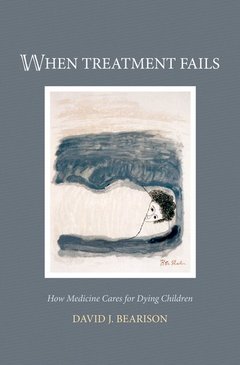Description
When Treatment Fails
How medicine cares for dying children
Author: Bearison David J.
Language: English
Subjects for When Treatment Fails:
Publication date: 01-2006
312 p. · 23.6x16.5 cm · Hardback
312 p. · 23.6x16.5 cm · Hardback
Description
/li>Contents
/li>
Over 50,000 children die of medical causes each year in the U.S. and 85 percent of them do so in hospitals. While great strides have been made in palliative care, many of these children still suffer considerably in the last months of life. Studies have found that pediatricians, who often do not expect to confront death on a frequent basis, and other hospital staff typically feel inadequately trained to manage the situation and are emotionally unprepared for the death. All of the feelings associated with caring for a chronically ill child, guilt, anger, frustration, ambivalence, exhaustion, are magnified when a child's life can no longer be prolonged. When Treatment Fails will be based directly on the voices of those who care for children at the end of their lives, the doctors, nurses, social workers, pastoral counselors, and psychologists. Centered around seven cases, Bearison will elicit and record the stories of these professionals about their experiences caring for a patient. The narratives will illustrate how clinicians coming from different professional roles speak about the biological, psychological, spiritual, and social dimensions of caring for terminally ill patients. Bearison will analyze their ways of making sense and giving meaning to their difficult experiences, unearthing common and distinct themes and issues across disciplines. The book will also identify the ways their interdisciplinary teams facilitate or hinder each others work, and to what extent greater reciprocity can be achieved in providing the highest quality palliative care.
Paediatric end of life care. Narrative theory, medicine and methods. Twenty stories about how children die. Witholding or withdrawing curative treatments. Pain and suffering. Staff reacting. Patients and families reacting. Conclusions.
© 2024 LAVOISIER S.A.S.
These books may interest you

Family-Based Palliative Care 66.48 €



